The other day there was a news report in Kantipur daily that there was a protest by the locals against building an electric crematorium in Ward 11, Manido Tole, Shankhamul, Patan. The plan for building the crematorium at Shankhamul was first announced by the authorities of the Lalitpur Metropolitan and reported by the media way back in 2017 (https://myrepublica.nagariknetwork.com/…/lal…/news.html.twig), “We came to know about the plan to build the electric crematorium in our Tole only few months ago when there was a news about it in the media. We were never consulted by the metropolitan,” says Rajendra Tandukar, chairperson of the Manido Tole Development Committee.
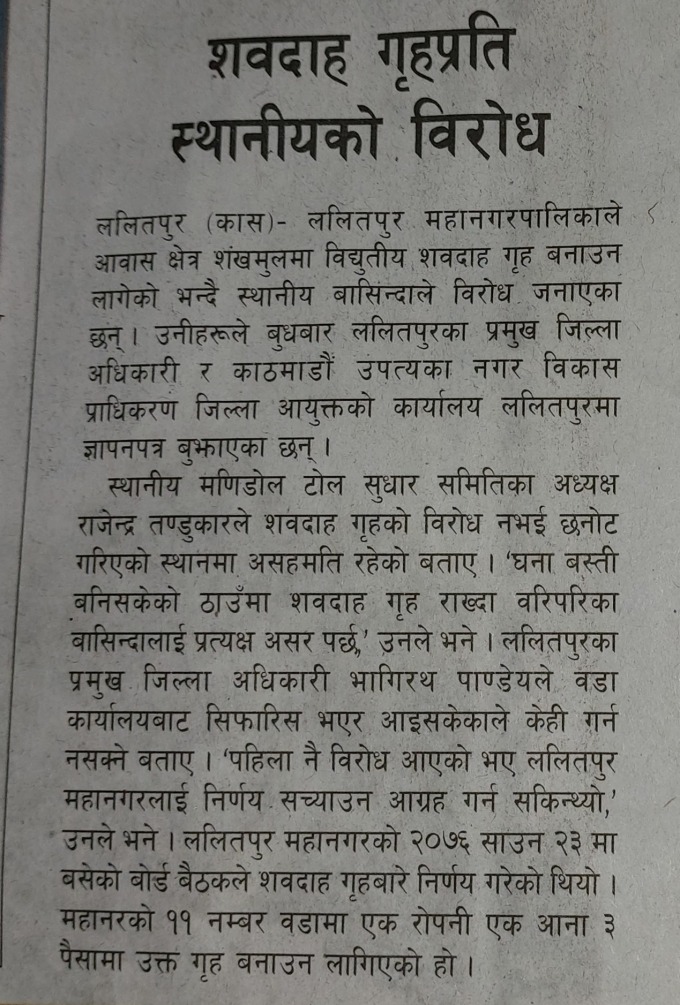
Amongst others, the Local Government Operational Act 2017 (LGOA) requires the annual municipality and ward level development plans to be participatory, in the sense that any development plan or activity that directly effects a local community are properly consulted and that it incorporates their participation and ownership. The mandatory requirements of the participation and consultation of the local community in the development planning and implementation process has been included not only for facilitating participation and ownership but for upholding the principles of transparency and good governance in the spirit of the Constitution of Nepal 2015 and the whole idea of decentralized and people centered development.
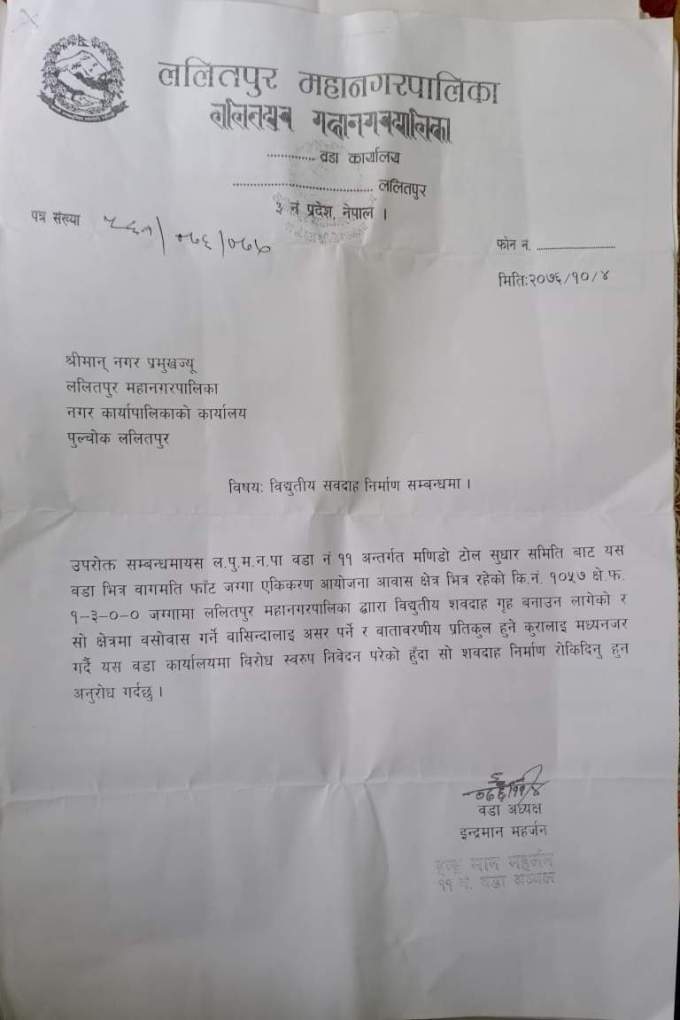
The chairperson of the Ward 11 of Lalitpur Metropolitan, Indra Man Maharjan claims, “I had spread the word around regarding the plan to build the electric crematorium in Ward 11 in Manido when it was decided.” The chairperson had signed the agreement and the approval with the metropolitan in this regard as the Ward level development plans and activities are required to be agreed and approved by the ward level authority.
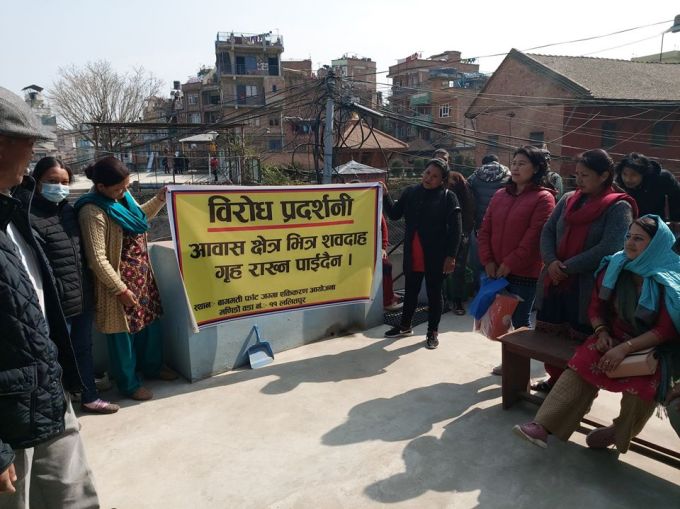
The local residents of the Manidol Tole where the electric crematorium is being planned to be built by buying 1 ropani 3 Anna land from a private land owner, are of the views that they were never properly consulted and asked to participate in the planning and decision-making process. “Why is the electric crematorium is planned to be built in a land which falls in a town planning area?” questions Swayambhu Man Dhakwa, a local resident. According to law an area or land developed as town planning by the Town Development Board representing the government cannot be used for purposes like operating a factory or other activities like electric crematorium that creates pollution or disturb the residential ambience. “Our problem is not with the electric crematorium technology. But the land or area where it is being planned to be built. Electric crematorium can not be built in a densely populated area,” says Narayan Tandukar, Secretary of the Manido Tole Development Committee. “It can be built in a land or area which does not fall in a residential area. Or it can be built in the area where the old crematorium ghat is currently located in Shankhamul,” he adds.
With the building up of the protest by the local community the ward chairperson as the local elected representative of the people along with the local delegation submitted a protest letter to Chiri Babu Maharjan, Mayor of Lalitpur Metropolitan, requesting to cancel the electric crematorium project at Manido. “We have already done a study for building the electric crematorium. Electric crematorium is environment friendly. The plan is almost final now. We will consult the local community now on how to build the electric crematorium building,” said the Mayor in the meeting with the delegation. “The protest has been may be because we (metropolitan) failed to convince the people or the people failed to understand the advantage of electric crematorium than the traditional cremation that requires wood,” he added.
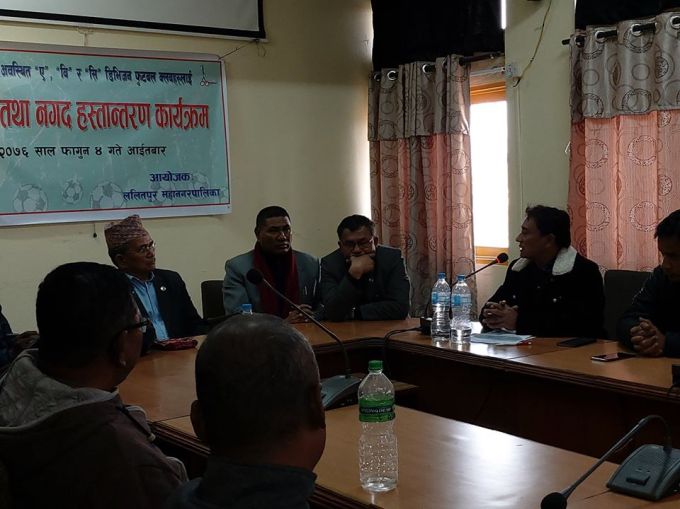
The participants in the delegation however were not ready to agree with the Mayor and asked why the local residents were not properly consulted in the process. Why the electric crematorium is being planned to be built by buying a private land and not in a land already available in the old traditional crematorium ghat at Shankhamul managed by the guthis?
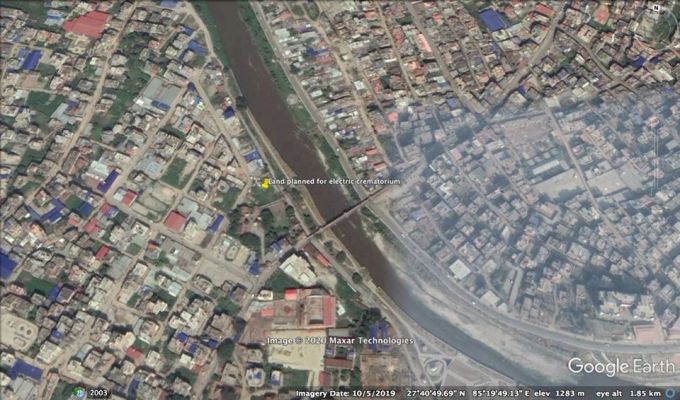
Looking into this issue of development plan being protested by the affected resident community, an inclusive participatory development planning expert is of the opinion, “This happened because the people were not consulted. The approach was top down.” Such arbitrary development planning by both the national and the local governments have resulted in protests and discontinuation of development in many urban and rural municipalities. National and local governments should understand people’s participation is a must in development planning and decision-making, he added.
